MAP Tests for Kindergarten through 1st grade
There are three different kinds of MAP (Measures of Academic Progress) Tests for students grades Kindergarten through 1st grade. Depending on your student’s needs, school, and teacher, each test may be administered to evaluate their academic progress. The three kinds of tests are Screening Test, Skills Checklist Test, and MAP Growth Test.
Overview of the MAP for Kindergarten to 2nd Grade
The MAP test measures student growth and achievement in various subjects, including reading, math, language usage, and science. Here is an overview of the NWEA MAP test for kindergarten, first grade and second grade students:
- The test is administered on a computer and is adaptive, which means that the difficulty level of the questions adjusts based on responses. This allows for more precise measurement of student progress and achievement.
- The MAP test focuses on foundational skills, such as letter recognition, phonics, and basic math concepts. The test includes both multiple-choice and open-ended questions, as well as interactive items that require students to drag and drop, click, or draw on the screen.
- The test takes approximately an hour to complete and can be broken up into smaller sessions if needed. Teachers may choose to administer the test multiple times throughout the school year to track student progress. Most school districts administer the MAP test 3 or 4 times during the school year. Ask your child’s teacher how often and when the MAP test will be given to your child so you can help your child prepare!
- The results provide teachers with valuable data on student achievement and growth. This information can be used to inform instructional decisions and to identify areas where additional support may be needed.
- In addition to the core subjects of reading and math, the NWEA MAP test also includes a science assessment for students in first grade and second grade. This portion of the assessment measures basic science concepts and skills, such as scientific inquiry, life science, earth and physical science.
Overall, the MAP test is an effective tool for measuring student growth over time and provides valuable information on foundational skills. This helps the teacher to identify areas where additional support may be needed.
Screening Test
The MAP Screening test for Early Learners is used to get baseline information for new students. This test will only be used for Kindergarten or pre-K students. The test adapts after each “Initial Sub-skill Section”, where students who get less than 4 questions correct will get a less difficult section, and students who get 4 or 5 correct will get a more difficult section.
Early learners will be tested for Math Numeracy and Reading Literacy only.
The Screening: Mathematics Early Numeracy test will have 35 questions.
In the Mathematics Early Numeracy Test’s Initial Sub-skill Section, students will be tested for:
- Counts: Counts 1 to 10 and One-to-One Correspondence for 1 to 10
- Number/Numeral: Identifies Numerals 1 to 10
- Computation: Computes with Manipulatives: Moving Objects
If the child is moved to the Less Difficult Adaptive Section, they will be tested on:
- Counts: Rote Counting — Counts to a Number
- Number/Numeral: Matches Numerals 1 to 10
- Computation: Identifies Numbers of Objects: More/Fewer
If the child is moved to the More Difficult Adaptive Section, they will be tested on:
- Counts: One-to-One Correspondence for 11 to 20
- Number/Numeral: Identifies Numerals 11 to 20
- Computation: Computes with Manipulatives: Numerical Answer
The Screening: Reading Early Literacy test will have 33 questions.
In the Reading Early Literacy Test’s Initial Sub-skill Section, students will be tested for
- Phonological Awareness: Rhyming Words
- Visual Discrimination/Phonics: Letter Identification
- Concepts of Print: Orientation to the Page
If the student is moved to the Less Difficult Adaptive Section, they will be tested on:
- Phonological Awareness: Matching Sounds
- Visual Discrimination/Phonics: Visual Discrimination of Words
- Concepts of Print: Understanding Pre-Reading Behaviors
If the student is moved to the More Difficult Adaptive Section, they will be tested on:
- Phonological Awareness: Manipulating Sounds
- Visual Discrimination/Phonics: Matching Sounds to Letters
- Concepts of Print: Identify Title/Author and Counting Words
MAP Growth
The MAP Growth test for Kindergarten through 1st grade (K-1) is an adaptive test used to assess the growth of a student from one term to the next, and figure out what the student is next ready to learn. For these grade levels, the MAP Growth Math K-2 (Early Learners) and Reading K-2 (Early Learners) are used. Because children may not know how to read yet, headphones are used and some questions will be read aloud. This is a broader assessment test that can be given to students each term. They may also be aligned with specific state standards.
MAP Reading Kindergarten – Grade 2
MAP Growth Reading K-2 (Early Learners) is approximately 40 minutes long with two 20-minute sessions, although the test is untimed. The test will have around 43 questions.
What appears on your child’s test will be dependent on what state & school district your child is in. Because the test is adaptive, your child may see questions from above their grade level. The Reading K-2 has content for pre-readers and beginning readers, with some questions read aloud via headphones and others that require independent reading, depending on how the test adapts to your child.
Here are some areas that your child may be expected to know on their MAP Reading K-2 test:
| Skill Type | Content |
|---|---|
| Foundational Skills | Phonics and Word Recognition Phonological Awareness Print Concepts |
| Literary and Informational Text | Meaning, Context, Craft, and Structure Informational Text: Key Ideas, Details, Craft, Structure Literature: Key ideas, Craft, Structure |
| Language and Writing | Capitalize, Spell, Punctuate Language: Grammar, Usage Writing: Purposes: Plan, Develop, Edit Text Types and Purposes, Research |
| Vocabulary Acquisition and Use | Word Meanings and Relationships |
| Vocabulary Use and Functions | Language: Context Clues and References Vocabulary Acquisition and Use |
MAP Reading Test Practice for Kindergarten – 2nd Grade
TestingMom has many resources for students preparing for their MAP Growth Reading K-2 (Early Learners) test. Here is what a MAP Test question may look like for your student!
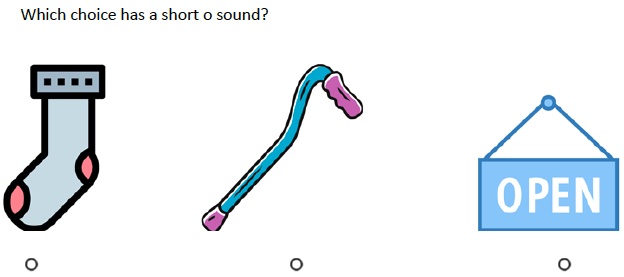
Answer: 1st bubble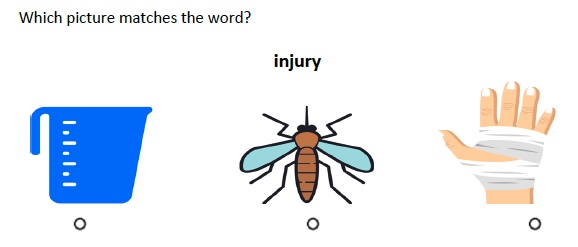
Answer: 3rd bubble

Answer: 3rd bubble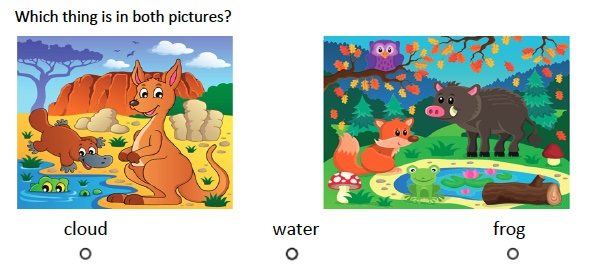
Answer: 2nd bubble
Be sure to become a member of TestingMom.com to unlock MAP Test practice questions like these and much more for your student!
MAP Math Kindergarten – Grade 2
MAP Growth Math K-2 (Early Learners) is approximately 40 minutes long, with two 20-minute sessions, although the test is untimed. The test will have around 43 questions.
What your child sees on their Math K-2 (Early Learners) is dependent on both the state your child is in & their school district. The test is adaptive, so your child may see questions from above their grade level, and the test’s difficulty will adjust according to what your student answers correctly or incorrectly.
Here are some areas your child may be expected to know on their MAP Math K-2 test:
| Skill | Content |
|---|---|
| Geometry | Reason with Shapes and Their Attributes |
| Measurement and Data | Represent and Interpret Data Solve Problems Involving Measurement |
| Number and Operations | Number and Operations: Base Ten and Fractions Understand Place Value, Counting, and Cardinality |
| Operations and Algebraic Thinking | Properties of Operations Represent and Solve Problems |
MAP Math Test Practice for 2nd Grade
TestingMom has many resources for you and your child as you prepare for your MAP Growth Math K-2 (Early Learners) test. Here are some sample MAP Test practice questions that your child may see on their test!
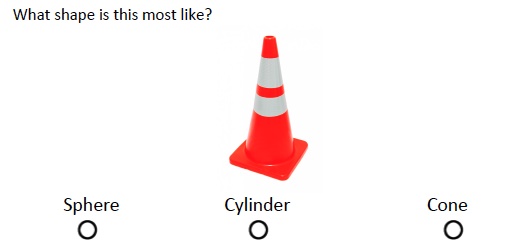
Answer: 2nd bubble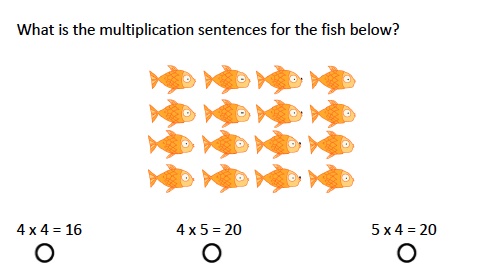
Answer: 1st bubble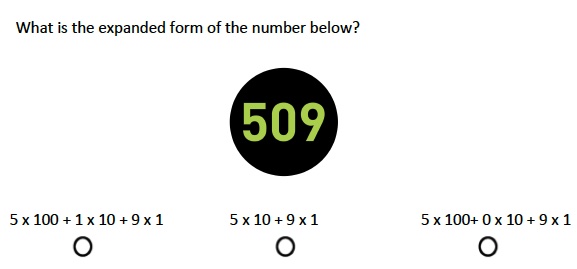
Answer: 3rd bubble
Answer: 3rd bubble
Be sure to become a member of TestingMom to access MAP Test practice questions like this and so much more!
Skills Checklist
The Skills Checklist MAP (Measures of Academic Progress) Test is a test used to assess a student’s knowledge of a specific skill, either before teaching the skill or after. There 10 reading skills and 28 math skills to choose from, with each test being scored as a percentage correct.
Depending on your student’s teacher, school, and state curriculum, a Skills Checklist test may be given throughout the year.
Here is the list of skills that your child may be tested on for a Math Skills Checklist test:
| Name of Test | Content |
|---|---|
| Math Computation 10 Manipulatives | Addition: Computation and Story Problems – Using Manipulatives Subtraction: Computation and Story Problems – Using Manipulatives |
| Math Computation- 10 Numbers | Addition: Two 1-Digit Numbers – Horizontal and Vertical Addition: Three 1-Digit Numbers Subtraction: Two 1-Digit Numbers – Horizontal and Vertical |
| Math Computation 10 Problem Solving | Addition: Story Problems – Result Unknown Subtraction: Story Problems – Result Unknown |
| Math Computation 20 Manipulatives | Addition: Story Problems – Using Manipulatives Subtraction: Computation – Using Manipulatives |
| Math Computation- 20 Numbers | Addition: Two 1-Digit Numbers – Horizontal and Vertical Addition: Three 1-Digit Numbers Subtraction: Two 1-Digit Numbers – Horizontal and Vertical |
| Math Computation- 20 Problem Solving | Addition: Story Problems – Result Unknown Subtraction: Story Problems – Result Unknown |
| Math Computation- 100 Manipulatives | Addition and Subtraction – Using Manipulatives Multiplication – Using Manipulatives Division – Using Manipulatives |
| Math Computation- 100 Manipulatives Regroup | Addition and Subtraction – Using Manipulatives Multiplication – Using Manipulatives Division – Using Manipulatives |
| Math Computation- 100 Numbers | Addition: 1- or 2-Digit Numbers – Horizontal and Vertical Addition: Multiple 1- and 2-Digit Numbers Subtraction: Two 1- or 2-Digit numbers – Horizontal and Vertical Multiplication: Basic Facts – Horizontal and Vertical |
| Math Computation- 100 Numbers Regroups | Addition: 1- or 2-Digit Numbers – Horizontal and Vertical Addition: Multiple 1- and 2-Digit Numbers Subtraction: Two 1- or 2-Digit numbers – Horizontal and Vertical Multiplication: 2-Digit Numbers <20 by a 1-Digit Numbers Division: Basic Facts |
| Math Computation- 100 Problem Solving | Addition: Story Problems – Result Unknown Addition: Story Problems – Start of Change Unknown Addition: Story Problems – Multiple Numbers Subtraction: Story Problems – Result Unknown Subtraction: Story Problems – Start or Change Unknown |
| Math Computation- 100 Problem Solving Regroup | Addition: Story Problems and Estimation Subtraction: Story Problems and Estimation |
| Math Computation- 1000 Manipulatives | Addition: Using Manipulatives Subtraction: Using Manipulatives Multiplication: Using Manipulatives Division: Using Manipulatives (with remainders) |
| Math Computation- 1000 Numbers | Additions: Sums to 1000 Subtraction: Minuend <1000 Multiplication: 2- or 3-Digit Number by a 1- or 2-Digit Number Division: Numbers 100 or Less by a 1- or 2-Digit Number |
| Math Computation- 1000 Problem Solving | Addition: Story Problems and Estimation Subtraction: Story Problems and Estimation Multiplication: Story Problems Division: Story Problems |
| Math NumberSense- 10: Count-Order-PlaceValue | Counts to 10 – Forwards and Backwards One-to-One Correspondence Identifies position – First, Last and 1st – 10th Compare Numbers Using Words Group Objects into 10s |
| Math NumberSense- 10: Representation | Names Numerals Represents Numerals Correctly Composes and Decomposes Numbers Identifies or Represents Whole, Part of, Half Identifies a Penny, a Nickel, and a Dime Identifies Name of Coin Worth 1¢, 5¢, 10¢ |
| Math NumberSense- 20: Count-Order-PlaceValue | Counts by 1s, 2s, and 5s, Counts Backwards Counts on from Any Number by 1s One-to-One Correspondence Groups Objects into 10s and 1s |
| Math NumberSense- 20: Ordering | Identifies Position: 11th to 20th Compares Numbers |
| Math NumberSense- 20: Representation | Identifies Numerals and Represents Numbers Composes and Decomposes Numbers Identifies Multiple Ways of Representing Numbers Identifies or Represents Fractions: Fourths |
| Math NumberSense- 100: Counting | Counts on by 1s, 2s, 5s, and 10s Counts by 10s to 100 |
| Math NumberSense- 100: Ordering | Compares Numbers Identifies Numbers 1 Greater Than and Less Than a Given Number Identifies Numbers Between Two Given Numbers Orders and Compares the Value of Coins |
| Math NumberSense- 100: Place Value | Identifies Standard Form Name Identifies Number of sets give pictures Identifies number of sets given numbers Reorganizes groups of 10s and 1s |
| Math NumberSense- 100: Representation | Identifies numerals Represents numbers Composes and Decomposes numbers Identifies multiple ways of representing numbers Fractions: thirds Money |
| Math NumberSense- 1000: Counting | Counts by 3s Counts on by 2s and 5s Counts by 10s and 100s from numbers ≤100 and ≥100 Counts by 10s from any multiple of 10 Counts on by 10s from any number |
| Math NumberSense- 1000: Ordering | Compares numbers using words and symbols Identifies number 10 less or more than a given number Identifies number 100 less or more than a given number Identifies numbers between two given numbers |
| Math NumberSense- 1000: Place Value | Groups objects into 100s, 10s, and 1s Identifies the number of 100s, 10s, and 1s in a number Identifies the number of 100s, 10s, and 1s in a number Identifies the standard form of a number from expanded form Identifies multiples ways of showing the same number using place values |
| Math NumberSense- 1000: Representation | Identifies numerals Represents numbers Composes and decomposes Identifies multiple ways of representing numbers Fractions: eighths Money |
Here are a list of skills that your child may be tested on in a Reading Skills Checklist test:
| Name of Test | Content |
|---|---|
| Reading Consonant Blends-Digraphs | Initial Blends and Clusters Final Blends Initial and Final Digraphs |
| Reading Decoding Multi-Syllable Words | Inflectional Endings Prefixes and Suffixes Open and Closed/C+le Syllables |
| Reading Decoding Patterns-Word Families | Words with Common Spelling Patterns |
| Reading Letter Identification | Upper Case Lower Case |
| Reading Manipulation of Sounds | Substitution of Sounds: Beginning, Middle, and End Blending of Sounds Deletion of Sounds |
| Reading Matching Letters to Sounds | Consonants Vowels |
| Reading Phoneme Identification | Initial Consonant Sounds Final Consonant Sounds Middle Vowel Sounds |
| Reading Phonological Awareness | Identifying Number of Syllables (one, two, and three) Rhyming Blending |
| Reading Syllable Types- CVC-CVCe-R-Controlled | CVC CVCe R-Controlled |
| Reading Vowel-Digraphs-Diphthongs | Digraphs Diphthongs |
See if TestingMom.com supports your child’s test by your school district. If you don't see your child's school district listed, check with us! We have practice for other tests as well.



Tell us about your experiences
3 Responses
Kenna
this is so hard. i am in sixth grade and i don’t even understand this. Also, how will kindergartners be able to read this stuff!
Mercy
This is pretty difficult for kindergarten
TestingMom.com
Hi Mercy,
Yes, and many times this is the first time they will be taking an actual test that is more formal than the classroom work. Talk about being nervous! That’s why, here at TestingMom.com, we have numerous resources to help students of all ages feel more prepared and have thousands of practice questions for the MAP test. Please email us at help@testingmom.com if you need help finding any of these resources for the MAP test.